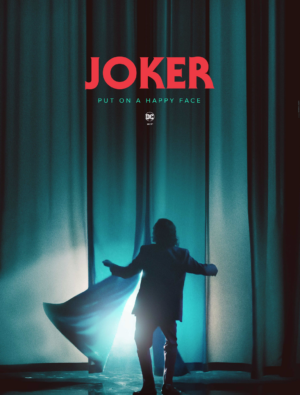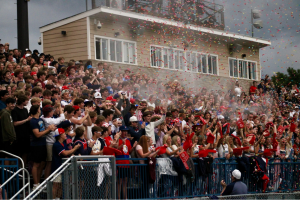There is enchantment in The Light(house)
‘The Lighthouse’ is one of the newest drama/horror films from A24.
November 15, 2019
Claire Suchy
Copy Editor
Following the success of his directorial debut, The Witch, Robert Eggers’ second installment on his filmography effortlessly blends sea shanties, excessive drinking, and annoying seagulls into the most wonderful 110 minutes of insanity seen on film this year. The Lighthouse recalls the story of two lightkeepers, Ephiram Winslow and Thomas Wake, played by Robert Pattinson and Willem Dafoe, respectively.
Winslow arrives to the lighthouse at the exposition, under the impression he would spend the next four weeks aiding Wake in mundane chores such swabbing the decks and replenishing the oil for the constantly burning light. After the allotted four weeks came and went, the scheduled ship never arrived leaving Winslow stranded on the rock with Wake. As the days pass, the tension grows between the two shabbys increases and leads to a power struggle between Winslow and Wake.
The state of Wake’s sanity becomes more apparent to the audience, the man has surrendered his sanity to the light. He’s inabilitated most of the time, often being found ‘worshipping’ the light fully nude. From the very beginning of the movie, the viewer becomes aware of the toll of the years of isolation has had on him.
With an already idiosyncratic filmography, The Lighthouse fits perfectly into Pattinson’s repertoire. He’s able to completely embody and deliver a truly spine-chilling performance of a man unhinged. Ephraim Winslow arrives to the lighthouse with a simple hope of earning himself some extra money; he’s quiet, obedient, and at times humorous. As the story progresses and Winslow continues giving up power to Wake, he becomes almost unrecognizable to the audience. He’s loud and messy, drinking the days away. Ultimately, the power balance shifts and Winslow ends controlling Wake.
The Lighthouse consistently keeps viewers on the edge of their seats. There is not a moment when the fate–both physical and mental–of the characters is clear. The film follows Winslow and Wake from the time that both arrive on the rock until their final moments, continuously building tension and developing the complex relationship through witty dialogue. The film strings you along, keeping an extremely steady, languid pace as more of the characters and their psyches are revealed until eventually escalating circumstances and building tensions lead both lightkeepers into madness.
With The Lighthouse being only his second directorial feature, Eggers delivers the same blood-curdling terror that he achieved in his 2016 film, ‘The Witch’. Eggers successfully takes audiences on a journey that drives good men to lose their minds, never losing the perfect pace to keep audiences seduced by the pure madness of both Winslow and Wake.
The Lighthouse neglects to have any characters besides Winslow and Wake, facing Dafoe and Pattinson with the burden of carrying the entire film. Both actors successfully deliver deeply haunting and hypnotic performances, keeping the audience enticed with Dafoe playing an authoritative sea dog and Pattinson a mostly reserved former timberman.
The film transports viewers back in time, with a 19:1 film ratio, the ratio most used by the silent film era, and a century-old film camera, making the entirety of the film black and white. Not only did Eggers produce an intellectually stimulating story, but one of great aesthetic value as well. By using a different aspect ratio, Eggers is able to convey an almost observational perspective to viewers, making the story almost personal. Shots are extremely character-driven, displaying a honed in emotion.
I give this movie a 9/10. It was nearly two hours of a mind-bending storyline accompanied with incredible acting and directing.


































































